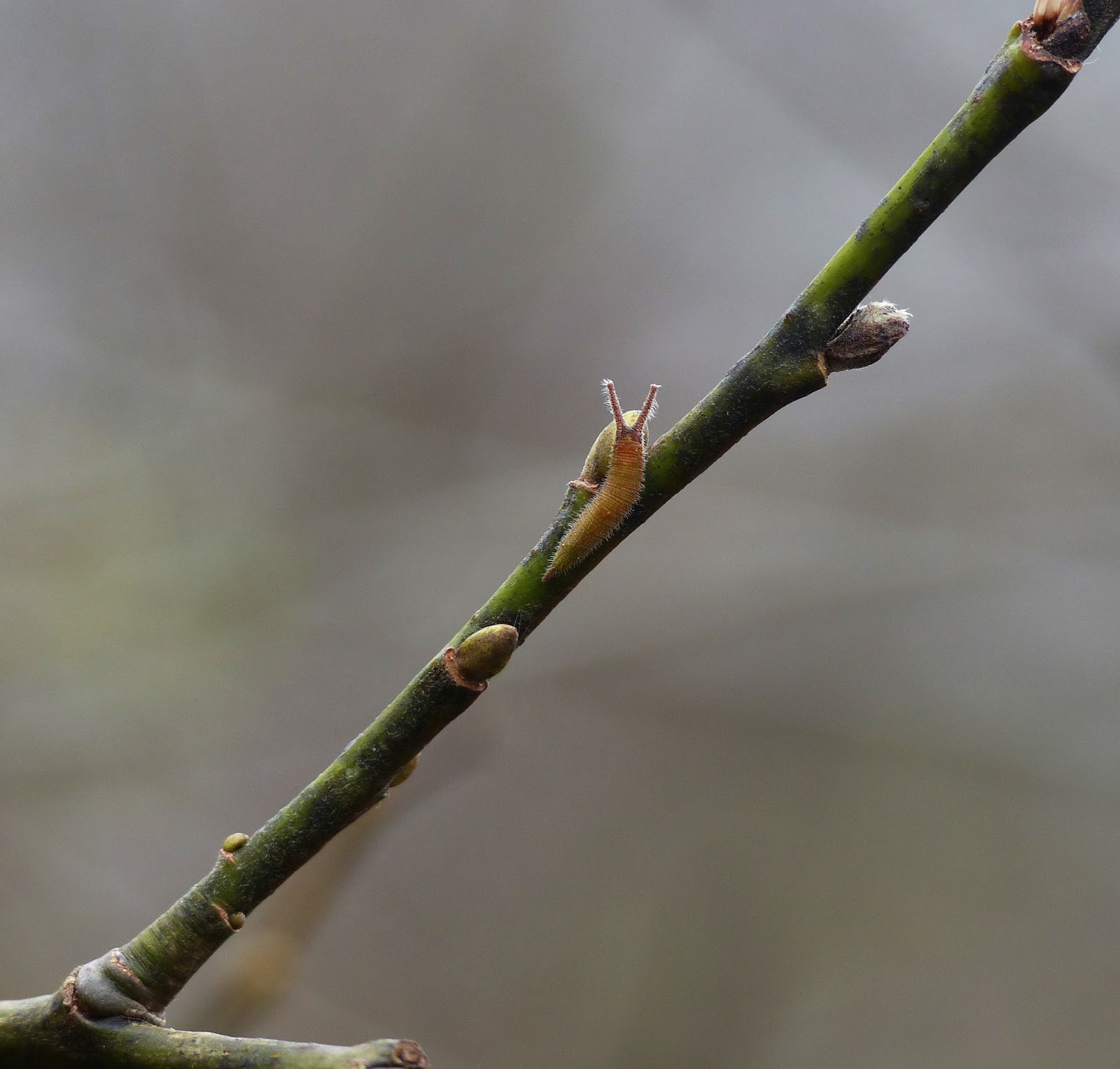for that which was lost is found...
Two of the six 'pillars I'm following in the wooded valley four miles from where I live (near Daneway Banks on the UK Butterflying Map) vanished during Storm Darragh. I feared an early winter titmouse strike.
However, one of them reappeared yesterday, in a branch fork 1m from the bud spray he'd been in -
I spotted him from the path. The interesting thing is that he wasn't there on Mon Dec 9th - and I wouldn't have missed him in such an obvious spot. He must have been on walkabout, disturbed by the three-day storm.
The other one, sadly, is still absent, officially listed as Missing In Action. He might have been rubbed off by clashing branches in the storm. A titmouse strike is unlikely this early in the winter, even more so given the paucity of tits in the Emperor woods this winter...




